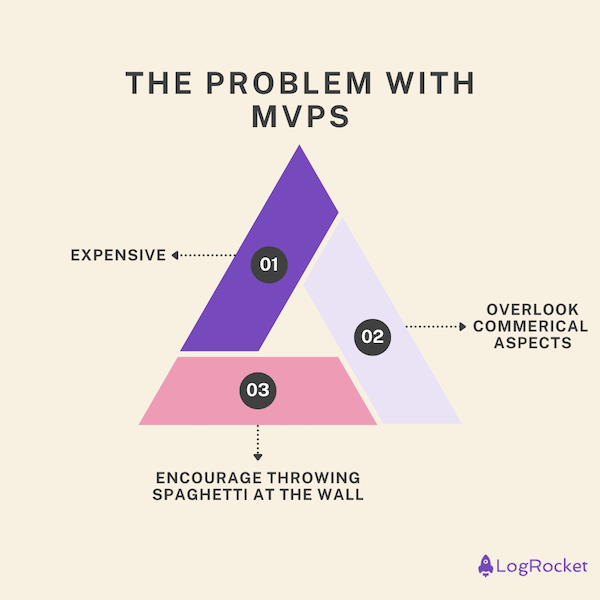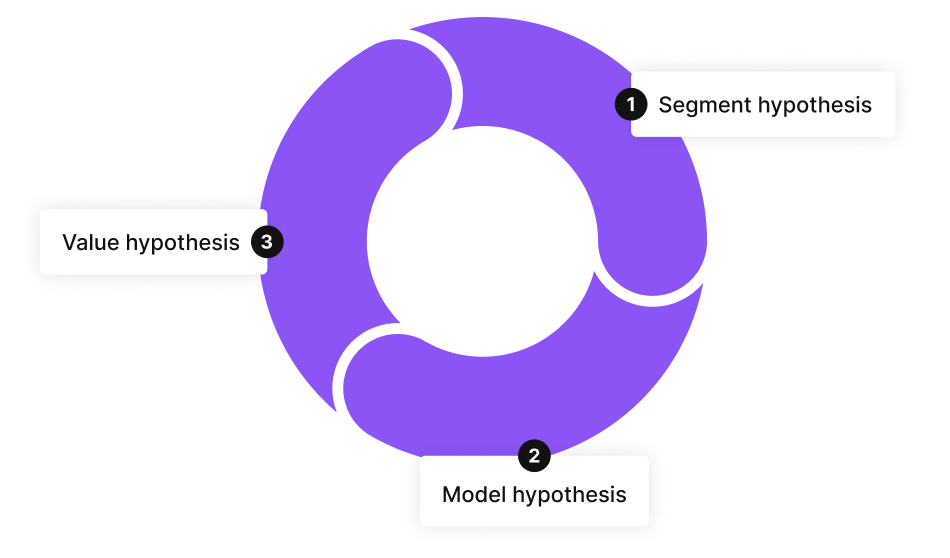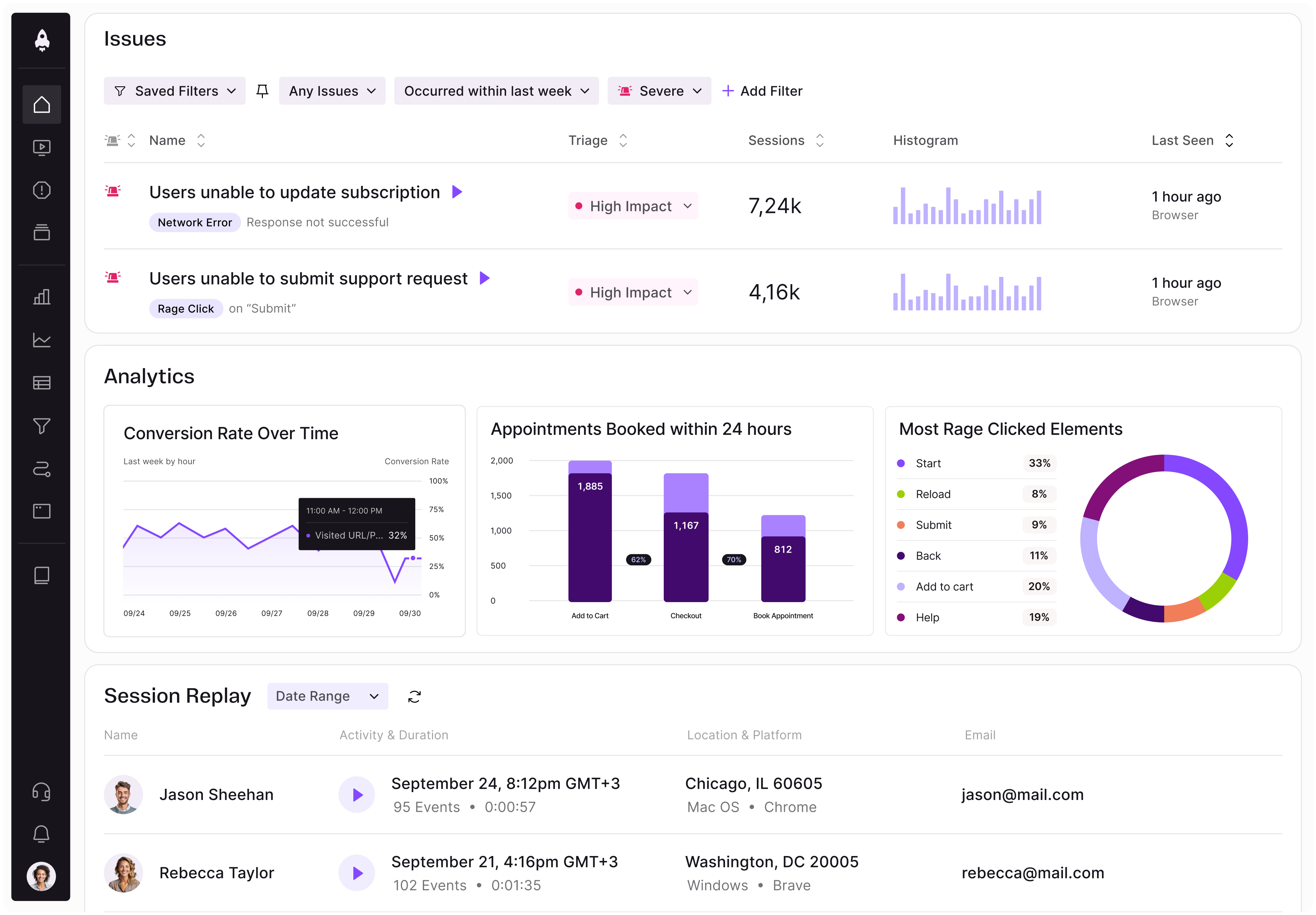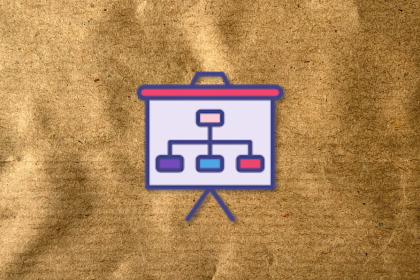“The Lean Startup” by Eric Ries tends to be one of the first books aspiring product managers encounter on their learning journey. It’s a solid piece that lays out the foundations of lean development practices and showcases what startup life looks like.

But there’s one problem…
Whether it intended it or not, the book contributed to a toxic MVP culture that many PMs now fall into. Don’t get me wrong, MVPs are great, but they’re far from a perfect solution.
As an alternative, this article outlines a case against MVPs, drawing on my own personal experience in the realm of product management.
Minimum viable products (MVPs) are great for validating product ideas and getting customer insights. However, they come with their own problems and limitations:

The biggest issue with the whole build-measure-learn cycle is that it’s more expensive than it’s depicted.
Yes, iterating on MVPs is significantly cheaper than spending a couple of months on building a whole product upfront. But even if you iterate weekly, it’s still a week’s worth of development down the drain — even if you’re just prototyping.
Building a product customers love isn’t that hard; the challenge is building a product that grows quickly and earns revenue along the way.
Oftentimes, MVP-focused development is the slowest way to get there.
Before even thinking about your MVP you should ensure that you target the right customer segment, secure enough room for growth, and test the willingness of people to pay.
The ability to “just test something” with an MVP encourages people to throw spaghetti at the wall. I’m sure you’ve come across people saying things like:
Although you might get lucky, the odds are slim.
Building products is a more sophisticated process than just testing every single idea you have until you find something that sticks.
MVPs can help you validate the strategy, but they’re better suited as an add-on to the strategic planning process than as a replacement for it.
Now that I’ve covered the limitations of MVPs, let’s discuss how to combat them.
In a nutshell, you need to do some homework before building and shipping your tests. Putting in more thought before testing helps you not only maximize chances of testing the right thing, but also makes drawing learnings and conclusions easier.
Before investing in an MVP, think of these two buckets:
Start any product initiative by defining the segment of users you’re going to target.
Having clarity on who your customers are (or might be) allows you to:
Here are some criteria for a great user segment:
Depending on your starting point, figuring out your target segment will look different. However, most product initiatives already have a pain point in mind that they want to solve for. The workflow looks something like this:
After following these four steps, you’ll end up with a strong segment hypothesis (if there’s more than one, it’s fine). You still need to validate it further with an MVP, but at least you have a good starting point.
It doesn’t matter how amazing your product is if no one knows it exists, or if people aren’t willing to pay you for using it.
Start by asking yourself:
There are a few ways to discover if people will pay for your product:
Great products are based on growth loops, meaning each cohort of users leads to a new cohort of users. There are four main ways to acquire users:
To hypothesize if any of those loops make sense, evaluate your target audience, and if:
The build-measure-learn cycle is an overly simplistic and inefficient loop, mostly because it’s expensive and doesn’t include key commercial factors related to building a product.
However, MVPs still make sense per se; you just need to do some homework beforehand.
You can organize your early product development into a three-step loop:

Odds are you’ll need to spin the loop a couple of times before you find a true product-market fit. Don’t get discouraged. The goal of this process is to maximize your learning speed, not to build a great product from day one (although it does increase the odds of doing so).
The most common challenges you’ll encounter are:
Take the learnings from these problems and adjust your hypotheses. Remember, they’re interconnected. For example, if people aren’t willing to pay the price you set, you can adjust your:
Those are learnings and possibilities that would be impossible if you just randomly built MVPs without having a specific segment and business model in mind. You don’t only want to learn what doesn’t work, but also why it doesn’t work.
Do your homework first, then jump to building an MVP.
Featured image source: IconScout

LogRocket identifies friction points in the user experience so you can make informed decisions about product and design changes that must happen to hit your goals.
With LogRocket, you can understand the scope of the issues affecting your product and prioritize the changes that need to be made. LogRocket simplifies workflows by allowing Engineering, Product, UX, and Design teams to work from the same data as you, eliminating any confusion about what needs to be done.
Get your teams on the same page — try LogRocket today.

Stop letting unreliable data block features. Treat data as inventory to track quality, ownership, and ship with confidence.

Learn why slide decks slow teams down and explore better tools like whiteboards, PRDs, and prototypes to improve collaboration and alignment.

AI PM roles are evolving fast. Learn the five types of AI PMs, the skills they need, and how they shape AI products across industries.

Learn how you can use AI agents to automate workflows, boost productivity, and choose the right tools while avoiding common pitfalls.